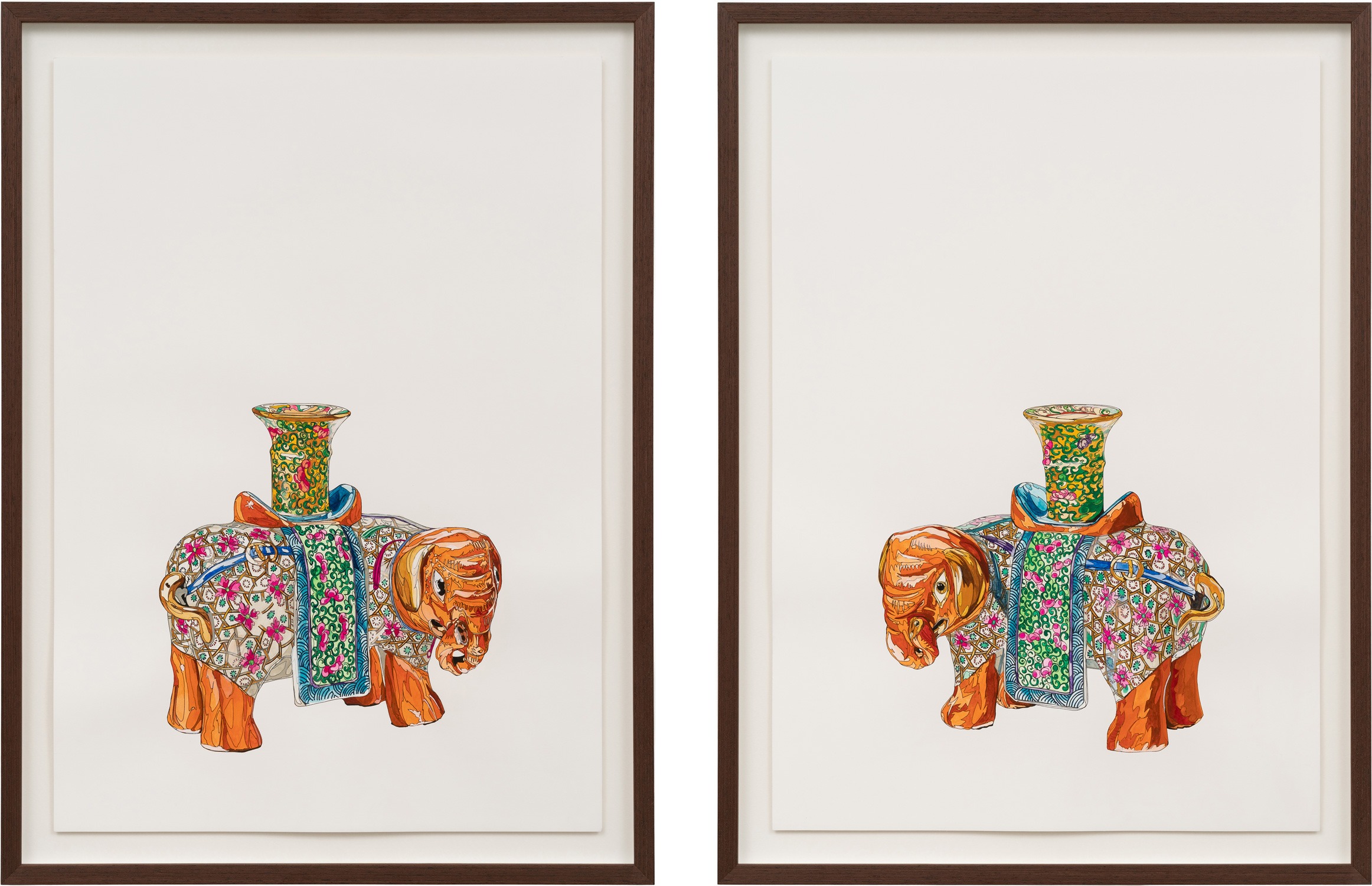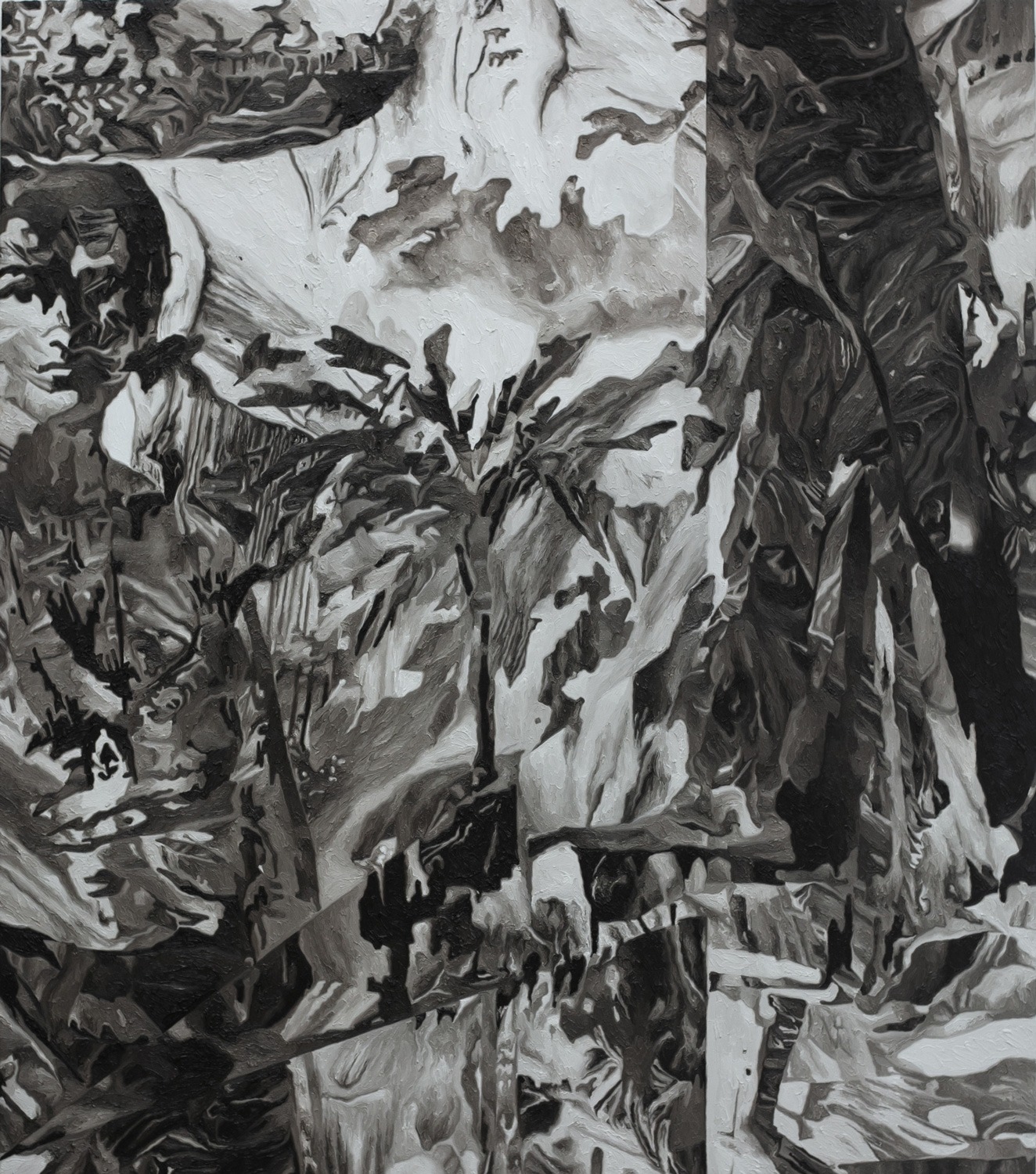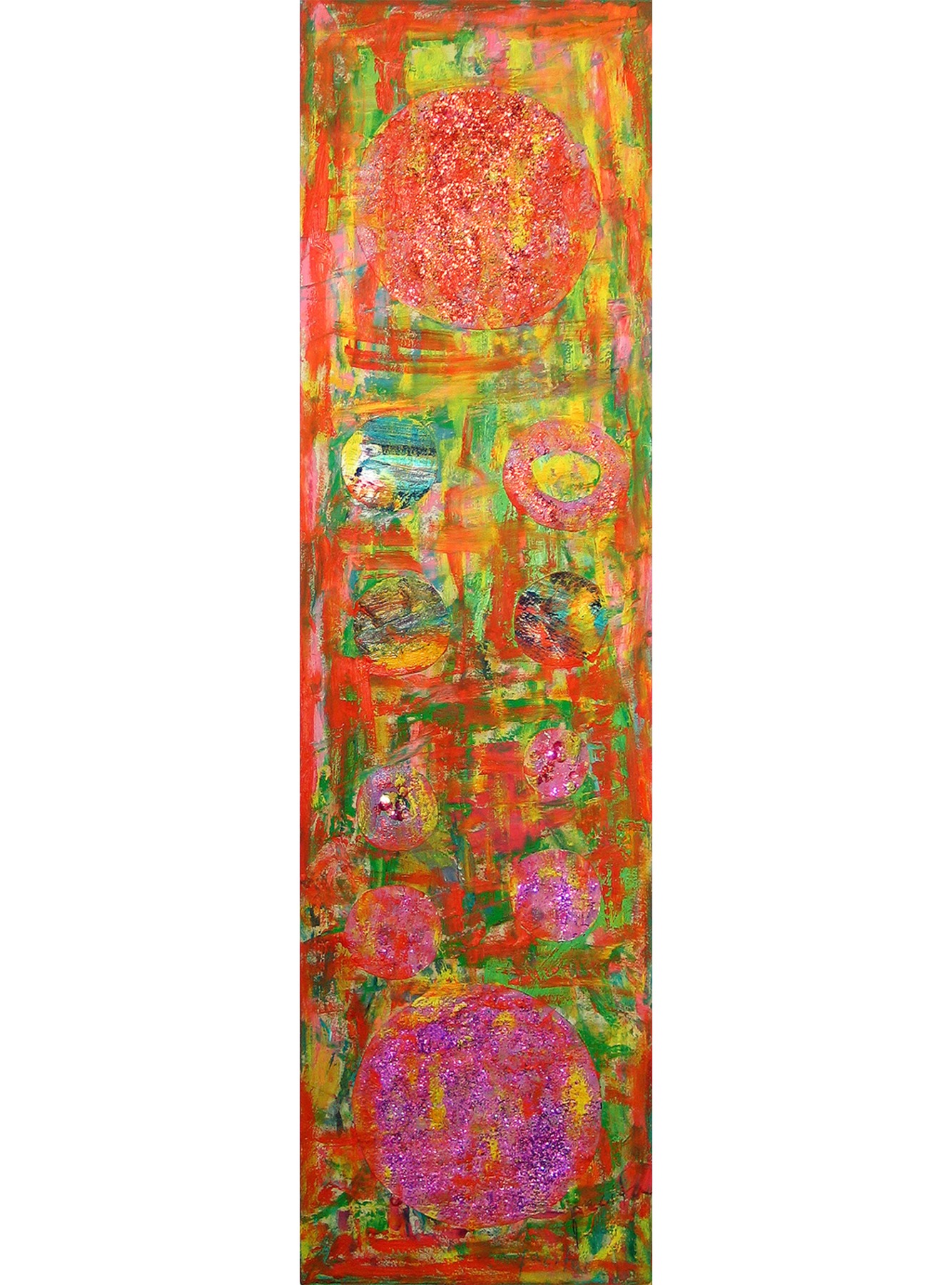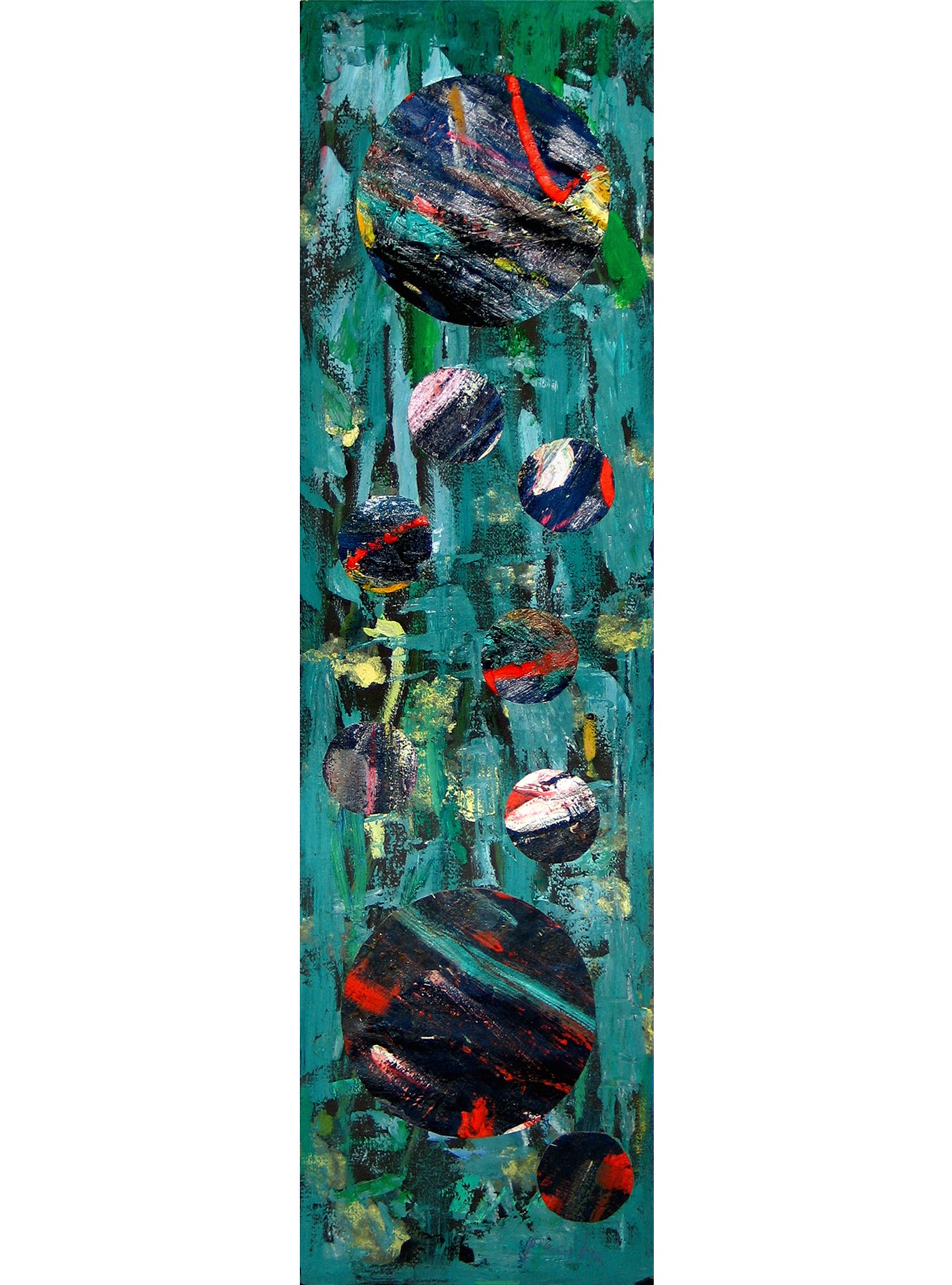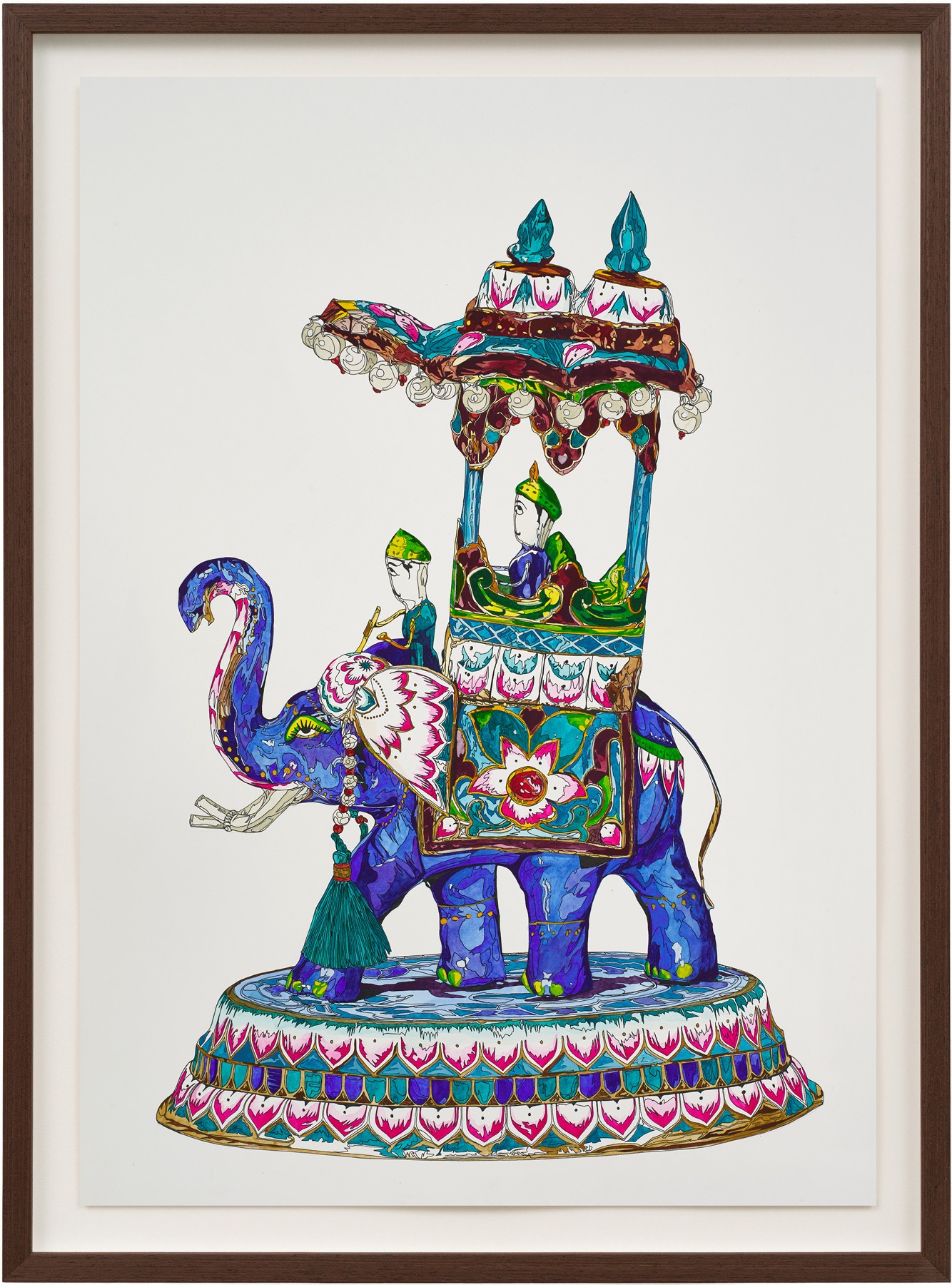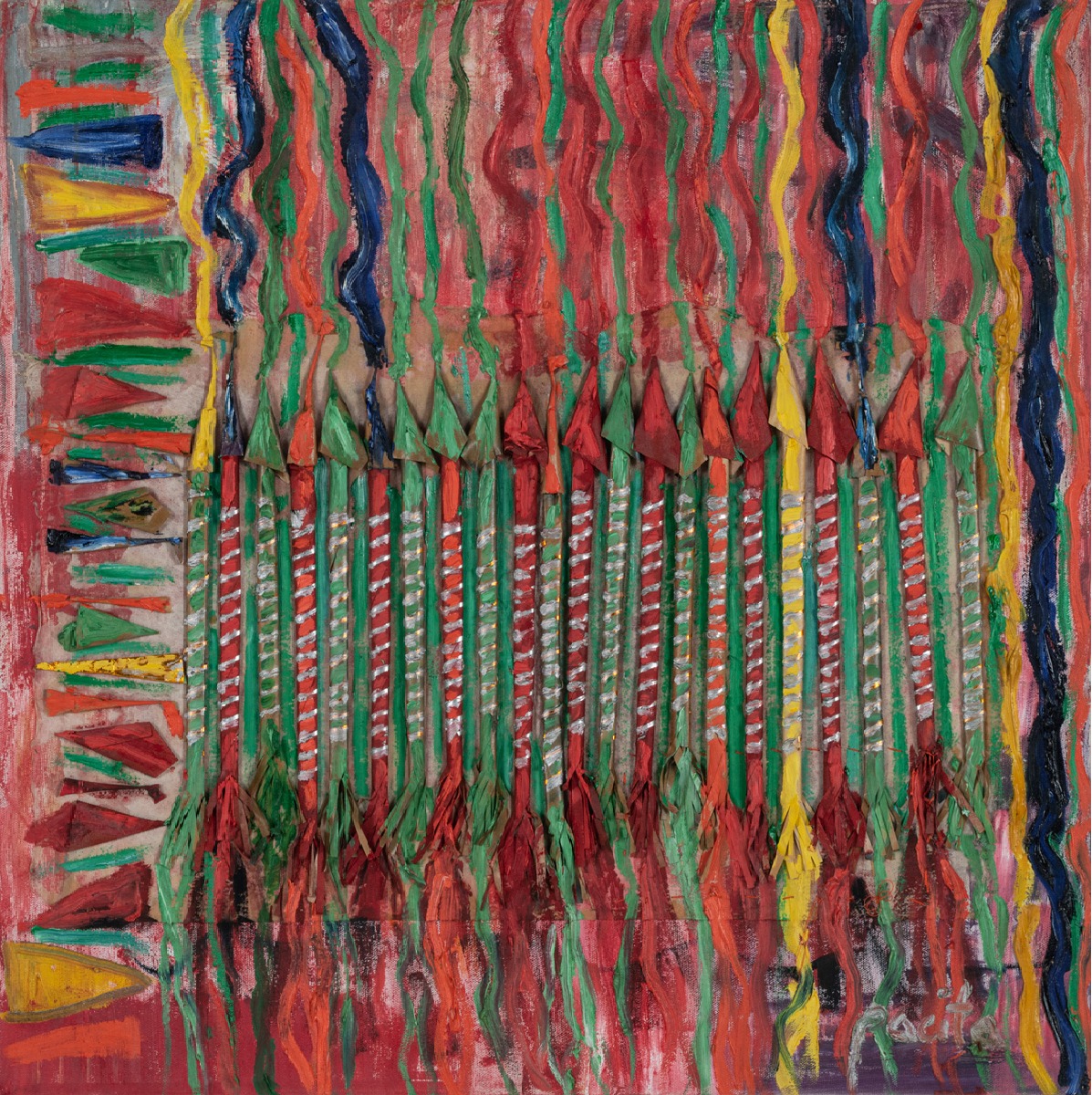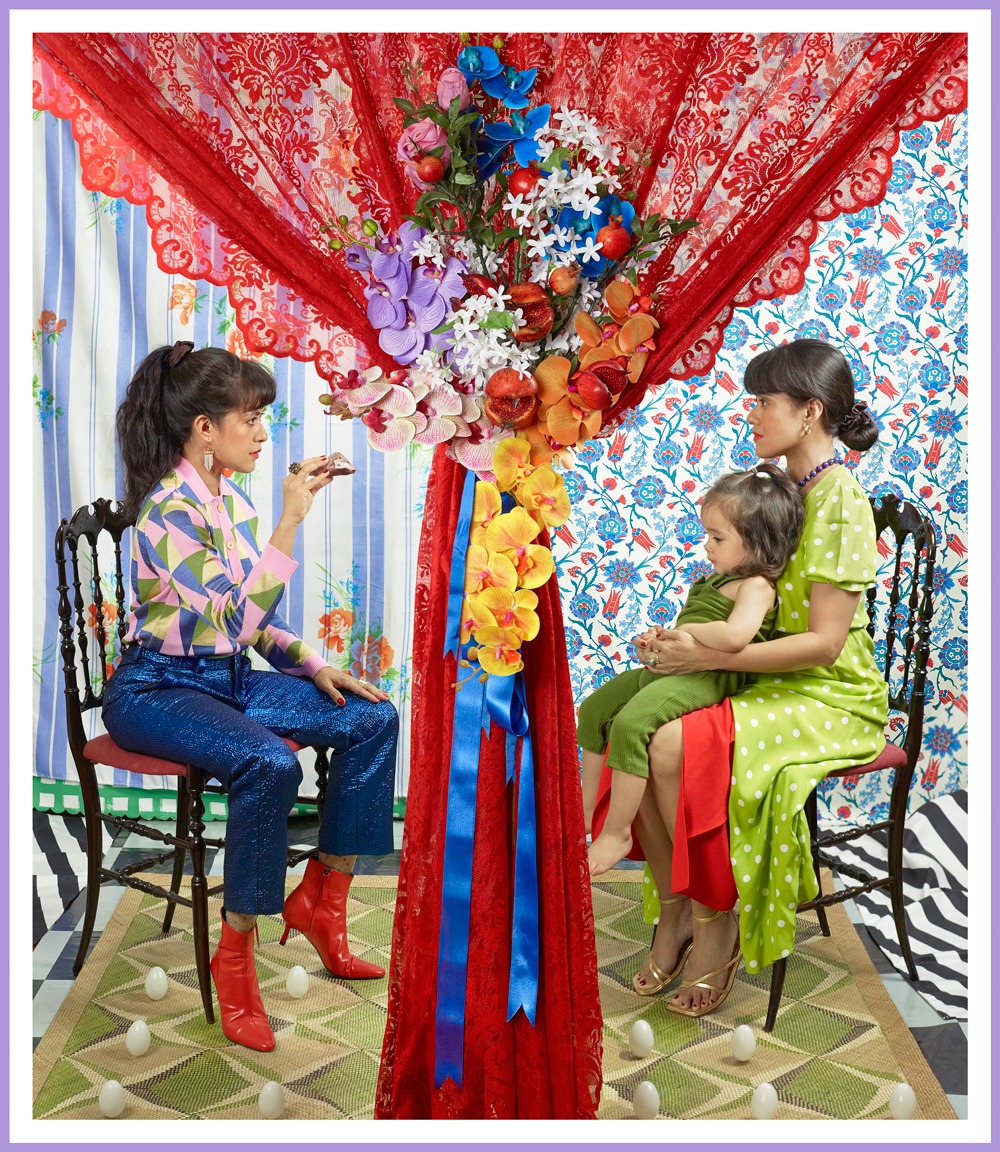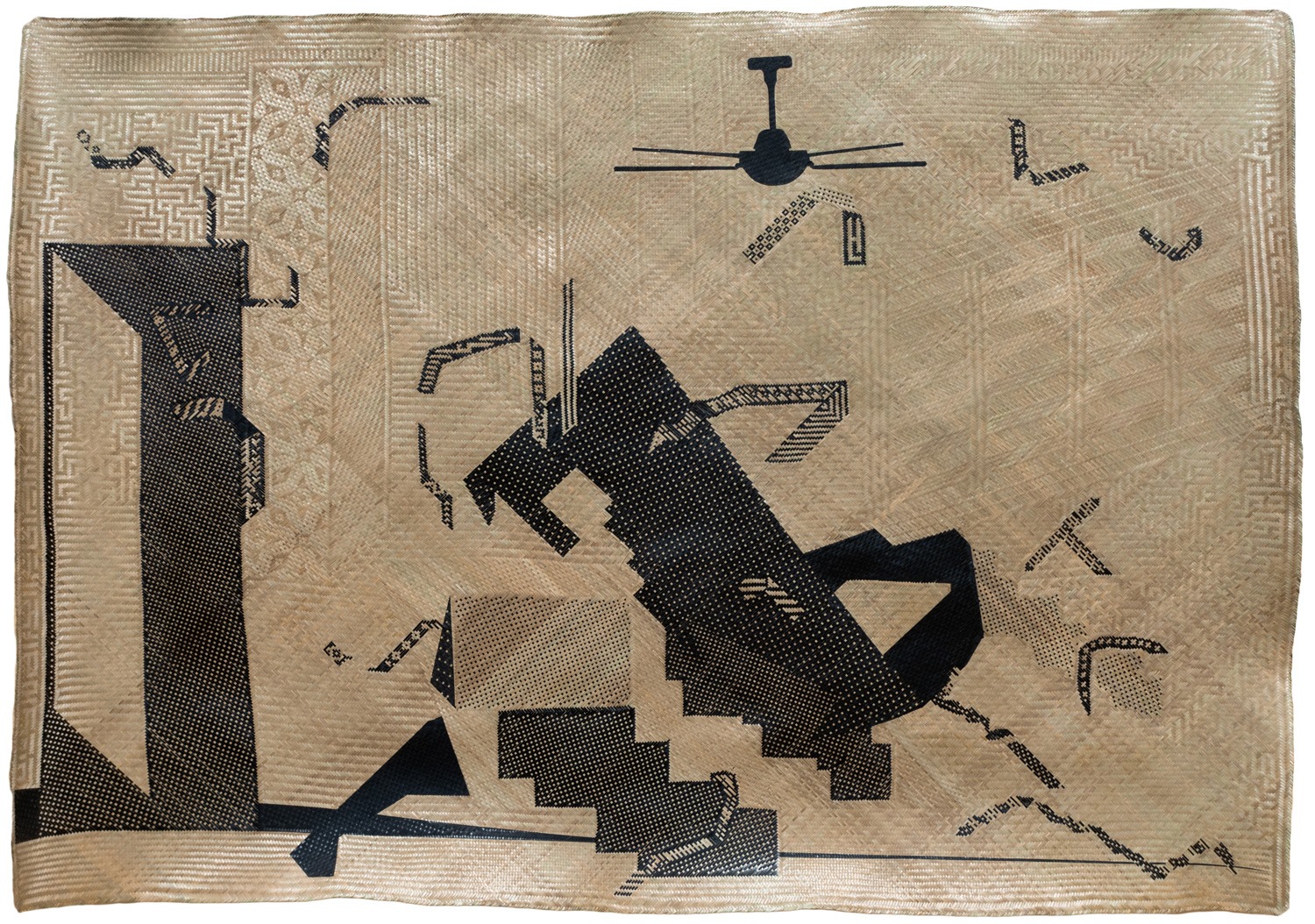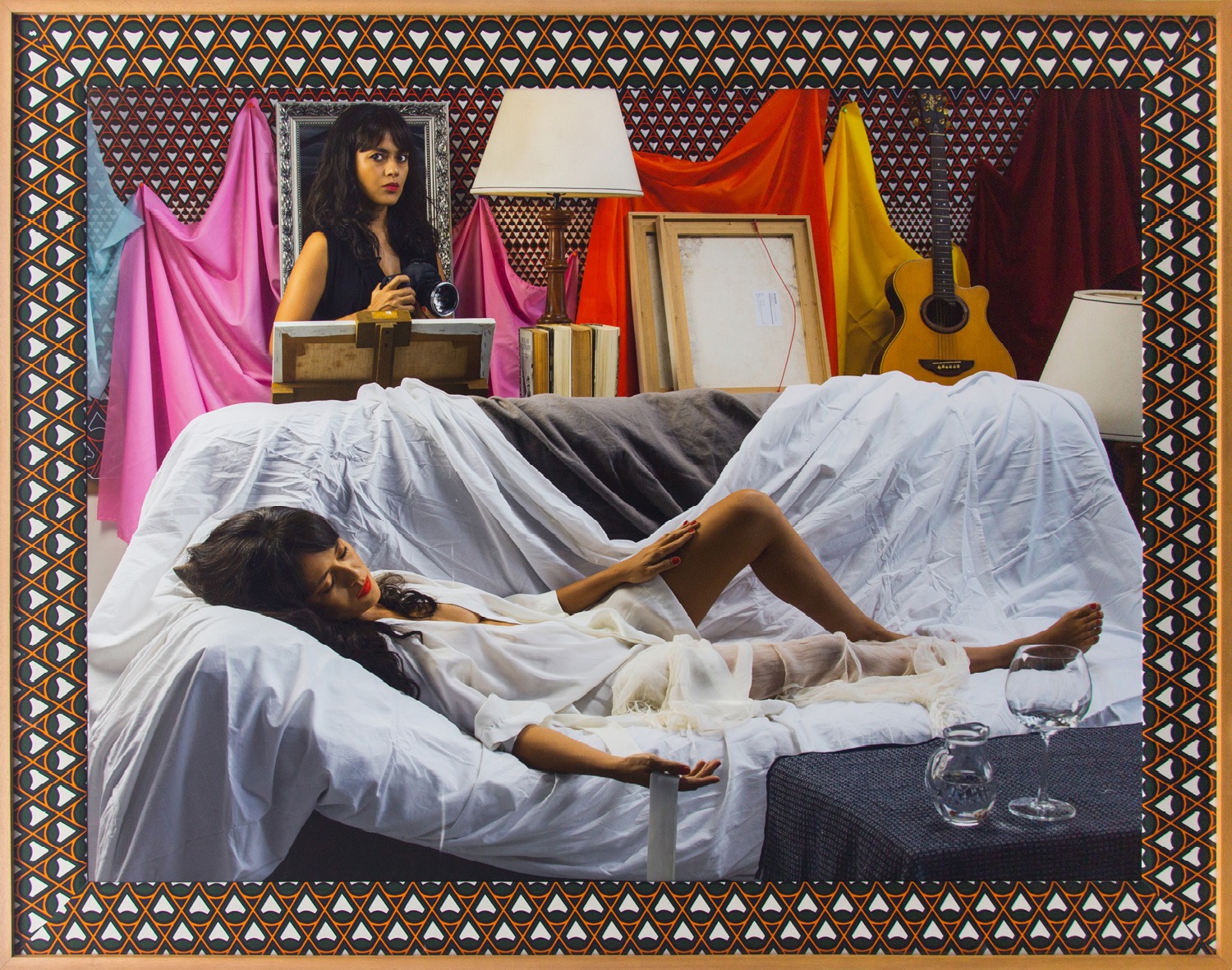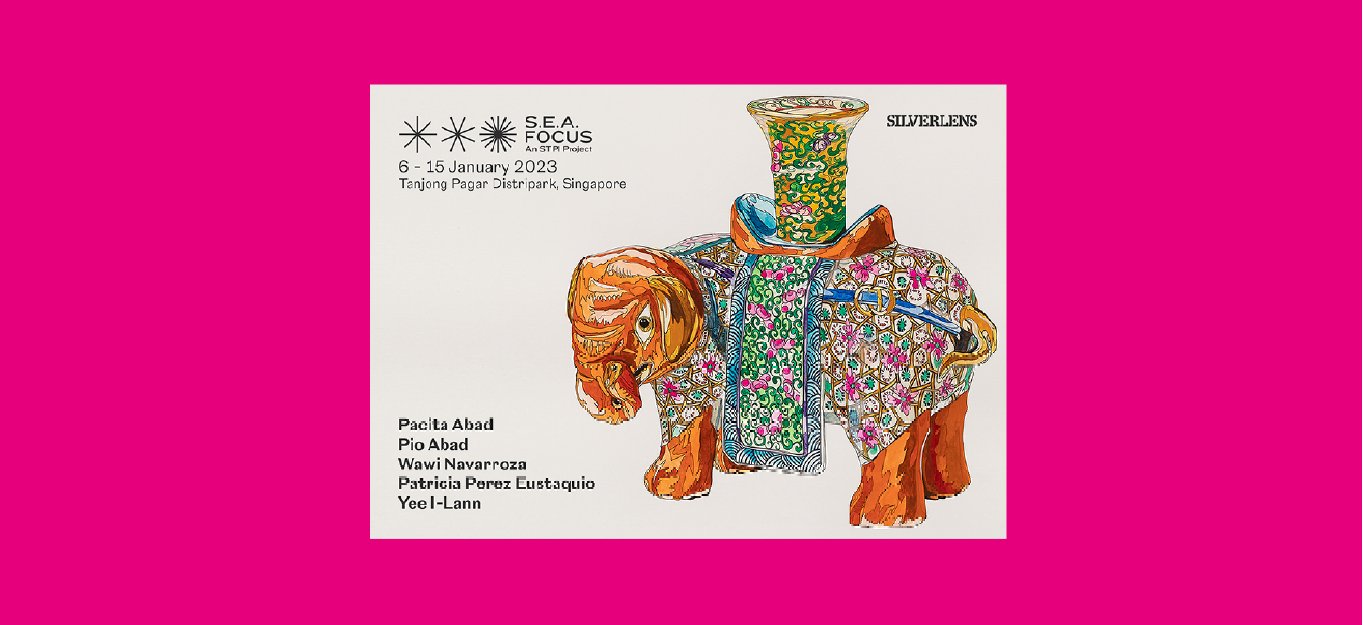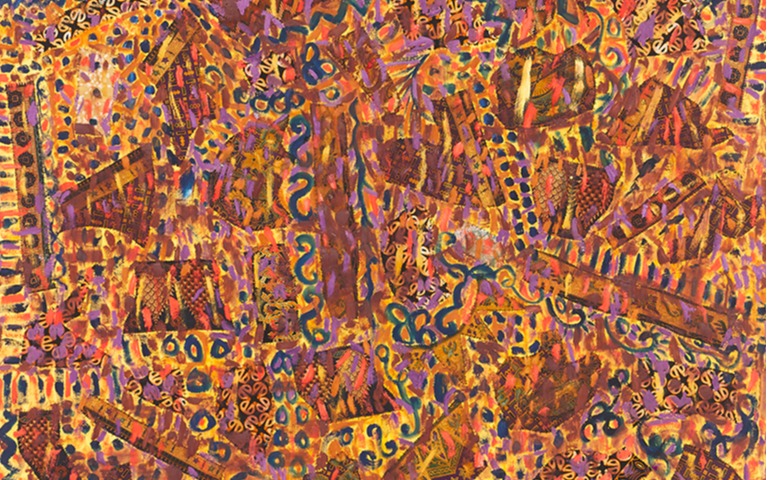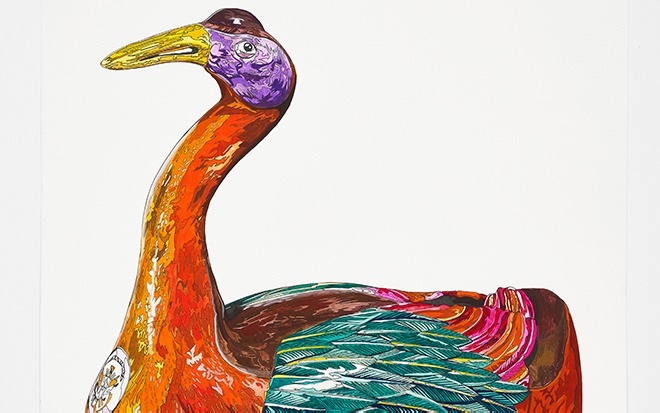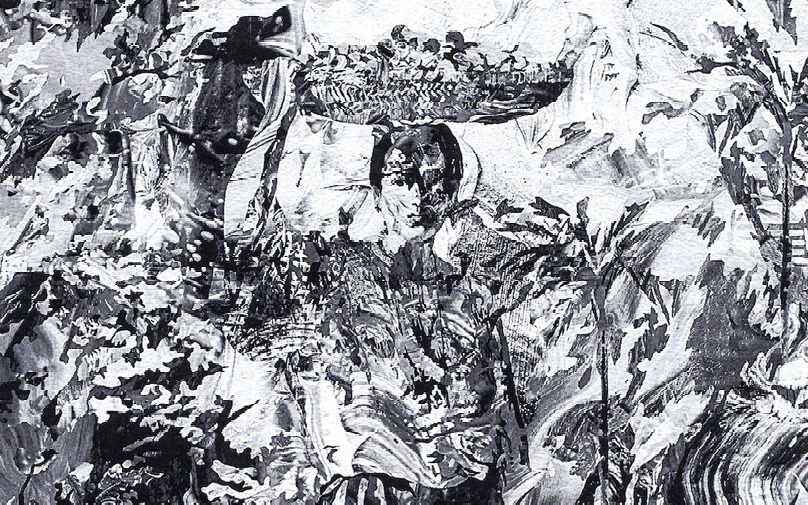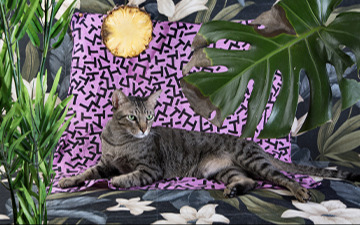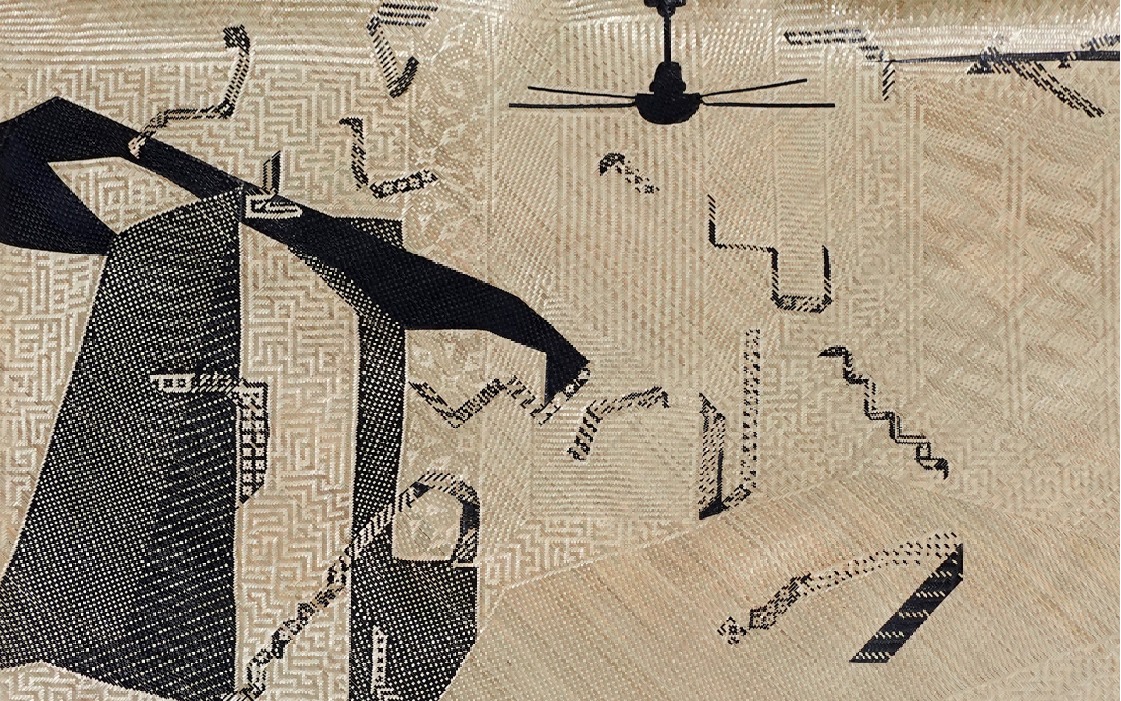
S.E.A. Focus 2023
Pacita Abad, Pio Abad, Patricia Perez Eustaquio, Wawi Navarroza, Yee I-Lann
Tanjong Pagar Distripark, Singapore
About
Silverlens returns to SEA Focus with a two-part presentation and a special exhibition featuring the late Filipina American artist Pacita Abad.
For the first half of the showcase on January 5–9, Silverlens will be presenting drawings by Pio Abad from his Notes on Decomposition series, and a painting by Patricia Perez Eustaquio. Self-portraits by Wawi Navarroza and a new tikar (mat) from Yee I-Lann’s Tukad Kad Sequence will conclude the presentation on January 10–15.
Pacita Abad
A selection of abstract paper assemblages and circle collages created during the final years of Pacita Abad’s life will be presented at the showcase.
While the artist was undergoing cancer treatments in Singapore, Pacita focused on creating abstract cardboard collages, largely using paper as a medium as it was less physically tolling. She did not, however, lose her obsession with paint. Circles have always been present in her work, and it is said that even when she was losing physical strength, Pacita would paint circles over and over until she could not anymore. In 2003, Pacita became the first female artist selected for a three-month residency at the Singapore Tyler Print Institute, where she developed and created Circles in My Mind, a series of 56 mixed media paper works incorporating lithography, relief and screen printing, and hand-colored paper pulp. Before her passing in 2004, she organized and oversaw the painting of the Alkaff Bridge, now known as the Singapore ArtBridge. It is her gift to the people of Singapore.
Pacita Abad (b. 1946, Batanes, Philippines; d. 2004, Singapore) was the daughter of a congressman, who had hoped that she would traverse a similar political path. But the course of Abad’s life changed after a year of travelling in 1973 to Iran, Afghanistan, Pakistan, India, Sri Lanka, Myanmar, Thailand, Laos, Taiwan, and Hong Kong. She decided to take up painting and later on married a developmental economist with whom she traveled to developing countries. Her experiences informed her subject matter from the beginning and introduced her to various artmaking techniques. She is most known for her large-scale trapunto paintings—quilted canvasses which were then layered with objects such as stones, sequins, glass, buttons, shells, mirrors, and printed textile. Her work has been featured in solo museum exhibitions worldwide and is part of important institutional collections. In 2023, a survey of her works curated by Victoria Sung will open at the Walker Arts Center in Minneapolis.
Pio Abad
In his series, Notes on Decomposition, Abad attempts to map our current state of cultural disenchantment through objects bought, sold and sequestered from 1991 to the present – objects that embody specific moments of political and economic decay over the past twenty years, to become an inventory of neoliberal fantasy through decorative things. Since 2014, Abad has been interested in the auction as a site for excavating these narratives and the auction catalogue as a document where the private histories of public personages are laid bare. The porcelain elephant figurines depicted in Notes on Decomposition (Lot no. 235) and Notes on Decomposition Lot No. (508) are taken from the sale of the personal effects of former U.S. president Ronald Reagan and former MoMA president and former U.S. vice president Nelson Rockefeller, respectively. The animal has been conscripted as the official symbol of the Republican party since 1864.
Pio Abad (b. 1983, Manila) is a Filipino artist living and working in London. His work is concerned with the personal and political entanglements of objects. He is currently part of Is it morning for you yet?, The 58th Carnegie International, Pittsburgh (2022), and will be part of In Our Veins Flow Ink and Fire, 5th Kochi-Muziris Biennale, Kochi, India (2022).
Patricia Perez Eustaquio
For SEA Focus, Patricia Perez Eustaquio presents an oil on canvas piece entitled Pastoral. Pastoral is a translation of La Vendadora de Lanzones by Felix Resurreccion Hidalgo which hangs at the Museo Del Prado in Madrid.
Eustaquio describes her work: “It depicts a woman with a basket of lanzones fruit over her head in a scene typical of the tropics: with lush greens and palm trees in the background. The work is based on a study that translates the original painting by Hidalgo into a collage of brush strokes from close-up photographs of paint. My idea was to replace the information from the original work with photos from an archive that show paint in all colors and thicknesses and gestures, in a way digitizing the handiwork, yet in a way doing exactly the opposite as the two-dimensional study becomes loaded with images of paint. This study was translated into a weave (into tapestry) and for this translation, I have used a portion of it for a work in oil. The work to me appears more like a surreal landscape where the overall image, a portrait, may be readily familiar but the parts that make it up appear more like strange rocks or alien trees because they are so loaded with information from elsewhere.”
Patricia Perez Eustaquio (b. 1977) is known for works that span different mediums and disciplines — from paintings, drawings, and sculptures, to the fields of fashion, décor, and craft. She reconciles these intermediary forms through her constant exploration of notions that surround the integrity of appearances and the vanity of objects. A recipient of The Cultural Center of the Philippines’ Thirteen Artists Awards, Patricia Perez Eustaquio has also gained recognition through several residencies abroad, including Art Omi in New York and Stichting Id11 of the Netherlands. She has also been part of several notable exhibitions, such as The Vexed Contemporary in the Museum of Contemporary Art and Design, Manila; That Mountain is Coming at the Palais de Tokyo in Paris, France; and An Atlas of Mirrors in the 2016 Singapore Biennale. She is currently based in Benguet Province, Philippines.
Wawi Navarroza
Wawi Navarroza is presenting self-portraits made during periods of transition in the artist’s life and practice.
The Heart is a Lonely Hunter/The Self-Portraitist (After Alcuáz, Self-Portrait) is from the artist’s 2019 exhibition Self-Portraits and the Tropical Gothic. This was Navarroza’s return to self-portraits after her Manila studio was destroyed by fire in 2016. “This time I finally had a Manila studio, the tableaus are more nuanced and orchestrated exploring conversations on the syncretic nature of the Philippine psyche (encapsulated in the Joaquinesque term “tropical gothic”) through the prism of my own identity, hybridity, other, women, artist.”
The second piece, Portals/Double Portrait (Self-Portrait) is from Navarroza’s first solo exhibition in London, As Wild As We Come. It marks the artist's transformation as a mother and a move from Manila to Istanbul, a country that lies in the intersection of ancient and modern cultures. Although both experiences impacted the artist in different ways, the artist chooses to focus on how they broadened her perspective and strengthened her connection to both art and herself.
Wawi Navarroza is a Filipino contemporary artist known for her works in photography, actively exhibiting in galleries and museums in the Philippines and internationally. Her images explore Self and Surrounding as seen in her works in contemporary landscape, constructed tableaus and self-portraits. Her works transmute personal experience to the symbolic while probing materials and studio practice; all perhaps to mirror a path to understanding a deeper sense of place & identity. Navarroza attended the International Center of Photography in New York City with a Fellowship Grant from the Asian Cultural Council. For a few years, she was based in Spain where she finished her Masters in Contemporary Photography (Master Europeo de Fotografía de Autor) awarded by Instituto Europeo di Design in Madrid. She currently lives and works in İstanbul, Turkey.
Yee I-Lann
Yee I-Lann's Tukad Kad Sequence #05 is part of a body of seven "tikar" exploring architectural space as a meeting or trigger point between the personal and public, between new and old knowledges. "Tukad kad" is a texture describing the ridges at the roof of one's mouth which get more pronounced with heat and acidity. The Tukad Kad Sequence marries I-Lann's Kadazan grandmother's "pixels of weave and worldviews" with her "digital pixels, drawing from a cauldron of contrasts under the whirl of the ceiling fan, churned through the louvre pane windows, hauntings."
Yee I-Lann is one of Southeast Asia’s leading figures in the visual arts, participating in major international exhibitions since the 1990s. Recent exhibitions include CHAOS : CALM (Bangkok Art Biennale 2022), The Protectors (Silverlens, New York), Until We Hug Again (CHAT Mill6, Hong Kong), Borneo Heart (SICC, Kota Kinabalu), Afro-Southeast Asian Affinities during a Cold War (Vargas Museum, Manila), the 10th Asia Pacific Triennial of Contemporary Art (QAGOMA, Brisbane), and the inaugural Indian Ocean Craft Triennial.
Pacita Abad (b. 1946, Batanes, Philippines; d. 2004, Singapore) was the daughter of a congressman, who had hoped that she would traverse a similar political path. But the course of Abad’s life changed after a year of travelling in 1973 to Iran, Afghanistan, Pakistan, India, Sri Lanka, Myanmar, Thailand, Laos, Taiwan, and Hong Kong. She decided to take up painting. Abad later married a developmental economist, Jack Garrity, whose work predisposed them to travel to developing countries. Her experiences in each place informed her subject matter from the beginning; traditional art practices like ink-brush painting in Korea, paint brushing on silk in the Dominican Republic, batik painting in Indonesia, tie-dye in Africa, macramé in Papua New Guinea, were techniques she introduced either singly or several in one art work. In the late seventies and early eighties Abad introduced a quilting method, trapunto, onto her canvasses, which were then layered with objects on top of her quilted material: stones, sequins, glass, buttons, shells, mirrors, printed textile. She referred to this technique, and the process of layering, stuffing, stitching and the collaging of objects on painted canvas, as trapunto painting.
Pio Abad (b. 1983, Manila, lives and works in London) began his art studies at the University of the Philippines before receiving a BA from Glasgow School of Art and an MA from the Royal Academy Schools, London. He has recently exhibited at KADIST, San Francisco, USA (2019); Honolulu Biennial, Hawaii (2019); Gwangju Biennale, South Korea (2018); Art Basel Encounters, Hong Kong (2017); Para Site, Hong Kong (2017); Kadist, Paris (2017); Centre for Contemporary Arts, Glasgow (2016); 4A Centre for Contemporary Asian Art, Sydney (2016); EVA International Biennial, Limerick (2016); e-flux, New York City (2015); Asia Art Archive, Hong Kong (2015); Museum of Contemporary Art and Design Manila (2015); Gasworks, London (2014) and Jorge B. Vargas Museum, Manila (2014).
Patricia Perez Eustaquio (b. 1977) is known for works that span different mediums and disciplines — from paintings, drawings, and sculptures, to the fields of fashion, décor, and craft. She reconciles these intermediary forms through her constant exploration of notions that surround the integrity of appearances and the vanity of objects. Images of detritus, carcasses, and decay are embedded into the handiwork of design, craft, and fashion, while merging the disparate qualities of the maligned and marginalised with the celebrated and desired. From her ornately shaped canvases to sculptures shrouded by fabric, their arrival as fragments, shadows, or memories, according to Eustaquio, underline their aspirations, their vanity, this ‘desire to be desired.’ Her wrought objects — ranging from furniture, textile, brass, and glasswork in manufactured environments — likewise demonstrate these contrasting sensibilities and provide commentary on the mutability of perception, as well as on the constructs of desirability and how it influences life and culture.
Wawi Navarroza is a Filipino contemporary artist known for her works in photography, actively exhibiting in galleries and museums in the Philippines and internationally. Her images explore Self and Surrounding as seen in her works in contemporary landscape, constructed tableaus and self-portraits. Informed by tropicality within the dynamics of post-colonial dialogue, globalization, and the artist as transnational, her works transmute personal experience to the symbolic while probing materials and studio practice; all perhaps to mirror a path to understanding a deeper sense of place & identity.
Yee I-Lann (b. 1971, Kota Kinabalu, Sabah, Malaysia) lives and works in Kota Kinabalu. Her primarily photomedia-based practice, often situated at the shifting nexus of power, colonialism and neo-colonialism in Southeast Asia, explores the impact of historic memory in social experience, often with particular focus on counter-narrative ‘histories from below’. In recent years, she has started working collaboratively with sea-based and land-based communities and indigenous mediums in Sabah, Malaysia.
Installation Views
Works
